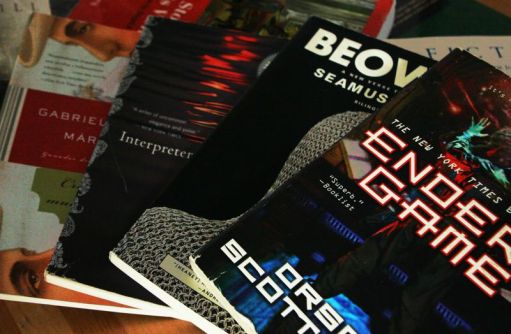
The new concentration is designed to prepare students for advanced study, or careers in writing, media and publishing.
(Samuel Joseph/The Ram)
By Nicole Horton
The creative writing program recently announced a new concentration within the English major. This concentration emphasizes the interconnectivity of creative writing, digital media, criticism and scholarship.
As a concentration with a dual focus on literature and creative work fully integrated within the English department, this degree offers literature courses, small writing workshops and practical industry training. Its goal is to prepare students for advanced study or careers in writing, media and publishing. In addition, students benefit from the resources provided by New York City — a worldwide center for literary publishing.
The integration of digital media into the concentration is a noteworthy addition. “We have a digital creative writer here as a writer and resident,” said professor Sarah Gambito, director of the creative writing program. “We’ll be offering two to three classes each semester. What differentiates what we offer in English as opposed to communication is the art of digital writing. Our digital creative writer is a programmer and a poet.”
Eligible applicants must be in their sophomore or junior year and able to maintain a 3.0 overall G.P.A. Juniors who are already declared English majors can also apply.
Admission to the English major with a creative writing concentration is based primarily on the strength of a submitted writing sample.
When asked what steps candidates should take in preparing a writing sample to help them stand out from the crowd, Gambito said, that “the only thing that I can say is send your best work.”
“It’s not necessarily that you have to send all kinds of pieces. It’s not a very long writing sample,” she added.
The creative writing concentration consists of a total of 11 required courses, including one junior theory course, five literature electives at 3000 level or above (at least two courses must be based on a historical period before the the nineteenth century), five creative writing courses and one non-credit capstone course. For the capstone course, students will collaborate on a creative writing public exhibition.
Gambito also has advice for students who are unsure whether they should declare an English major or choose a creative writing concentration.
“These courses are for students who really want a foreground for the study of creative writing. In the traditional English major, it’s two classes. It’s significantly higher the creative writing courses you can take. Half of your classes are creative writing.”
Creative writing concentrators will receive guidance from full-time creative writing faculty members who help students choose courses that provide a coherent focus across writing genres and historical periods, while at the same time allowing them to pursue an individualized course of study based on personal interests. Advisors will be assigned at random, but students will have the opportunity to change their advisor as they develop a mentoring relationship with faculty members.
Creative writing concentrators are encouraged to involve themselves with one of the publications on campus, including CURA, The Observer (and its literary section, “The Comma”) and The Fordham Ram. Class credit may be earned by working as a staff member for one of these publications. In addition, creative writing concentrators are also encouraged to explore internships relevant to their course of study.
A total of 15 students will be admitted each year. Interested individuals must submit an application and writing sample online. The first deadline for applications is Nov. 1, and students will hear decisions by Dec. 1.
When asked about plans to expand the concentration in the near future, Gambito expressed uncertainty, saying it is a pilot year.
“That may happen,” she said, “but for right now the cohort will be 15 students.”
__________
Nicole Horton is the Culture Editor for The Fordham Ram.
